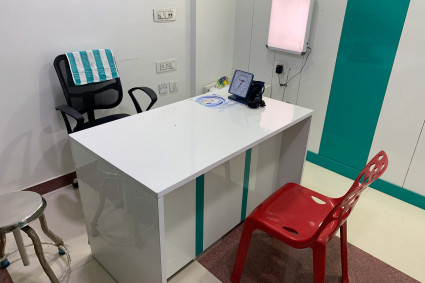
What Is Pediatric Eye?
Parents are always excited about the new member of the family. So, taking a lot of care is part of their love towards the newborn or even the growing child. Pediatric eye care is also important because there a time frame during which, if a child is having problem with vision, it can improve with certain measures. This window is important to avoid amblyopia like conditions.
Why Is The Pediatric Eye Visual System Different From An Adult?
A newborn and a child of 3 months age are only able to see black and white colors. It is due to the development of the eye going on. The developmental process after birth includes gradual increase in the size of the eyeball, thickening of the outer white coating of the eye, called as sclera. Development of the photoreceptors and the retina. As compared to the adult eye there are certain degenerative processes on going with the advancing age. It includes development of the arcus senile, maturation of the lens and loss of its clarity, and other degenerative phenomenon of retina such as age-related macular degeneration.
Early Detection And Treatment Of Vision Problems In Children
Why Is Eye Health Important For Children?
`The eye health is important for a child due to developmental processes that are going on in the eye. if the disease is detected in a specific period of time, it will be easier to handle it with a better outcome.
Pediatric Eye Care And Strabismus
Eye Exams For Pre Verbal Children
The visual acuity of pre verbal children can be assessed with the following tests
- Fixation and following: In this test attention seeking objects are moved Infront of the child.
- Comparison: Unilateral preference can be detected by patching one eye, if strongly objected by the child means reduced visual acuity.
- Fixation behavior: The test is performed when manifest squint is present. Fixation is promoted in the squinting eye by occluding dominant eye while the child fixates a target of interest.
- The 10-prism diopter test: It involves promotion of diplopia using 10 prism diopter prisms. Alternation between the diplopia targets suggest equal visual acuity.
- Rotation test: The test is performed by rotating the child and observing the nystagmus of the eyes and its reversal.
- Preferential looking: It is based on the fact that the child fixates on a pattern target rater then a homogenous stimulus.
Visual evoked potential
Eye Exams For School-Aged Children: Ages 6-18
Various charts can be used in school going children, it includes
- Kay pictures
- Keeler log MAR
- Sonksen crowded test
- log MAR chart
The Importance of Pediatric Vision Care
Pediatric eye care is important in different aspects
- Kids are in developmental process; early detection means better outcome.
- Kids are main concern of the parents; they want better results for their child.
- If any disease is associated with cosmesis such as strabismus, it will affect the psychosocial life of the child.
- No treatment means lifelong debility of the child.
Pediatric Eye Conditions That Can Be Detected During An Eye Exam
When To Take Your Child For An Eye Exam
If your child is not taking any interest in playing games, is unable to recognize faces, having any cosmetic problem like deviation of the eyes, cannot recognize colors or can’t walk or play in the dim or night time. It is important to take the child for eye examination.
How Can I Improve My Child’s Vision?
Depending upon the disease of the child, it is important to follow regular checkups with the eye professional. However, if the child is having decreased vision in one eye or deviation in one eye, regular patching of the normal is crucial for better results.
What Is Normal Vision For A 4-Year-Old?
In children vision of +2 to +4 is normal for age group pf 4 years, if there are no symptoms or associated deviation of the eyes. if there are any symptoms, it is important to give full correction of spectacles.
What Are The Benefits Of Pediatric Optometry?
For kids who are not school going or are unable to read alphabets, there vision can be assessed with pediatric optometry. The test is performed by using cycloplegic eye drops, that will dilate the pupils of the eyes. Then the optometrist will use various lenses to asses the vision of the child.
What Is The Difference Between An Optometrist And A Pediatric Ophthalmologist?
An optometrist is the concern person for the assessment of the refraction or vision of the child while pediatric ophthalmologist is associated with various diseases of the pediatric age group and their treatment with medicines or surgical procedures.
Conclusion
In conclusion, pediatric eye care is a vital aspect of ensuring a child’s healthy development. Timely detection and intervention in visual issues contribute to a brighter future for your little one. Regular eye exams, awareness of potential signs, and collaboration with eye care professionals are key steps in safeguarding your child’s vision and overall well-being. Prioritize pediatric eye care for a lifetime of clear sight and optimal growth.




